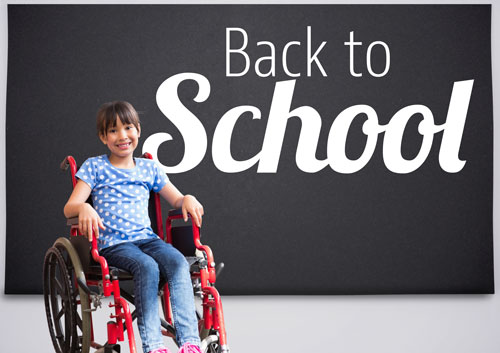If you find back-to-school season overwhelming you’re not alone. This time of year can be full of challenges for kids and for parents. If your child lives with a disability, back-to-school challenges may be magnified.
But with some proactive planning, you can reduce the stress you’re likely experiencing. Here are some tips to get you started.
1. Refresh IEP/504 and medical information
Take fresh look at your child’s IEP or 504 plan look and consider what worked last year, what didn’t work, and revise any goals that need to be modified. If your child has complex medical needs, update information such as emergency protocols, medication forms, and allergy or seizure plans. Gather any new assessments, therapy notes and any assistive technology details so teachers and therapists know how best to help your child.
2. Create a “student snapshot”
If your child has a new teacher, create a brief informational page about them that includes tips about their strengths, interests, accommodations, triggers, and relaxation strategies. Providing that information to faculty and allied health professionals will go a long way toward easing back-to-school transitions.
3. Set up parent/teacher meetings ASAP
Before the beginning of the school year, arrange brief visits with the teachers and therapists who will be working with your child. If you’re new to that school building, check out classrooms, hallways, lunchroom, playground, and bathrooms to make sure all are accessible and sensory-friendly. Ask where services such as OT, PT and speech therapies will take place, and find out who to contact in the event of a problem.
4. Take your child to meet teachers and therapists ASAP
Before their first day, take your child to meet new teachers, therapists and school personnel so that they recognize a few faces on opening day. Also tour the school with your child so they are somewhat familiar with the school building.
5. Have a dress rehearsal
Begin adjusting sleep schedules a week or two before the first day of school. Practice the morning routine (dress, meds, breakfast, backpack check) using visual aids, social stories or using a timer. Be sure to make it fun – like a game – so it isn’t stressful.
6. Purchase a sensory kit
Tools such as noise-reducing headphones, chewable jewelry, and a small fidget toy may help your child deal with stress and over-stimulation. Check with your child’s school to make sure these are permitted in class.
7. Ensure that tools are ready to go
Be certain that your child’s assistive technology devices are fully charged and in working order and that apps, logins and passwords are updated. If your child needs executive functioning support, set up planners, color coding, and a “pack and check” list for their backpack.
8. Help with socialization
Ask your child’s principal to reach out to a couple of families that might be willing to have a pre-semester play date with your child. Meeting a potential friend before the first day of school may help to minimize social anxiety. Additionally, find out if your child’s school offers structured socialization opportunities such as lunch buddies or clubs that correlate with their interests.
With a little forethought and a lot of planning, back-to-school season can be smooth sailing.


